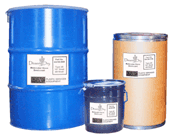(CHOOSE THE BEST ANSWER)
1. Why is it important to control the moisture in your processes? A. Excess moisture in machines can cause rust B. Moisture can make it nearly impossible to produce
good parts. C. Moisture around processing
equipment is a safety hazard. D. Moisture slows the drying time for plastic parts.
2. How do you remove excess moisture from your plastic
resin? A. Blowing extremely hot air over
the resin. B. An industrial strength heater set at 1000F or higher. C. Using a hot air desiccant
dryer. D. Lay your resin out in the sun for 8 - 10 hours.
3. What effect does excess moisture have on plastic
processing? A. Moisture degrades the molecular make up of the plastic. B. Plastic chemically bonds to the moisture creating a toxic mix. C. The moisture in
the air causes bubbling of the plastic. D. Cause the
machine to run slower cycles during the night shifts.
4. What is desiccant? A. A sand-like material used to
sift moisture out of plastic. B. An intelligent membrane that
mechanically separates plastic from
moisture. C. A porous spherical pellet that absorbs moisture from air. D. A fancy name for
an industrial fan used to dry plastic polymers.
5. How often should you replace your desiccant? A. At the end of
every work day. B. Monthly. C. Every 6 - 8 weeks. D. Once a year, typically in the spring.
6. Where can you purchase high-quality, economically priced desiccant? A. A local hardware store. B. Call SFP at 800-637-1033 or visit www.servicesforplastics.com C. Any automotive parts dealer should carry it. D. Desiccant is available only from the OEM
7. What types of desiccant are available from SFP? A. Alumina
Triglycerite B. Molecular Sieve
Type 13X and 4A. C. Porous
Clay D. Silica
Gel Type 41XB
8. Can desiccant be regenerated? A. Yes, but only
if you set it out in the sun on a hot day in July. B. No, once it collects moisture it must be disposed of properly. C. Yes, by purging at high temperatures
between 400 - 600F D. No, but it makes a nice ground cover for landscaping.
9. What are the most common types of hygroscopic plastics? A. Nylon, Polycarbonate, and Polyethylene
Teraphthalate B. Polyethylene, Carbon, and Cellulose C. Polystyrene, Nylon, and Polyester D. Polycarbonate, Nylon, and Polyurethane
10. Only one of these processing problems is NOT
caused by moisture. A. Silver Streaking B. Drooling C. Material
Degradation D. Short Shots


